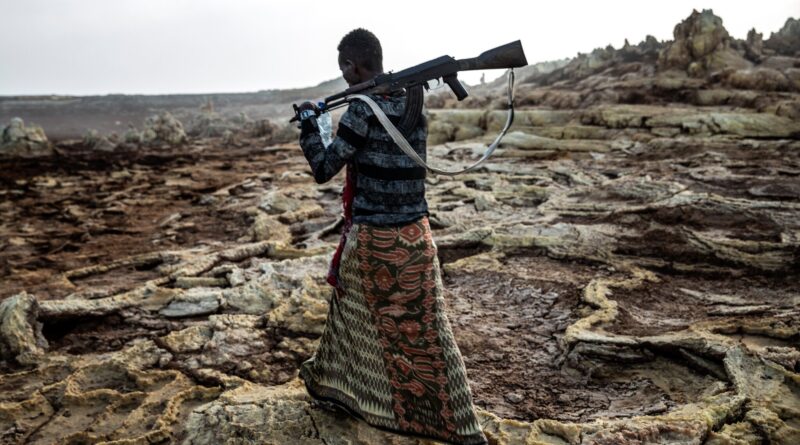This Ethiopian Road Is a Lifeline for Millions. Now It’s Blocked.
AFAR, Ethiopia — The road, a 300-mile strip of tarmac that passes through some of the most inhospitable terrain on earth, is the only way into a conflict-torn region where millions of Ethiopians face the threat of mass starvation.
But it is a fragile lifeline, fraught with dangers that have made the route barely passable for aid convoys trying to get humanitarian supplies into the Tigray region, where local fighters have been battling the Ethiopian army for eight months.
Aid workers say the main obstacle is an unofficial Ethiopian government blockade, enforced using tactics of obstruction and intimidation, that has effectively cut off the road and exacerbated what some call the world’s worst humanitarian crisis in a decade.
A relief convoy headed for Tigray came under fire on the road on July 18, forcing it to turn around.
In the past month, just a single United Nations aid convoy of 50 trucks has managed to travel this route. The U.N. says it needs twice as many trucks, traveling every day, to stave off catastrophic shortages of food and medicine inside Tigray.
On Tuesday, the World Food Program said 170 trucks loaded with relief aid were stranded in Semera, the capital of the neighboring Afar region, waiting for Ethiopian permission to make the desert journey into Tigray.
“These trucks must be allowed to move NOW,” the agency’s director David Beasley wrote on Twitter. “People are starving.”
The crisis comes against the backdrop of an intensifying war that is spilling out of Tigray into other regions, deepening ethnic tensions and stoking fears that Ethiopia, Africa’s second most populous nation, is tearing itself apart.
Inside Tigray, the needs are dire, and rapidly rising. The United Nations estimates that 400,000 people there are living in famine-like conditions, and another 4.8 million need urgent help.
Ethiopian and allied Eritrean soldiers have stolen grain, burned crops and destroyed agricultural tools, according to both aid groups and local witnesses interviewed by The New York Times. This has caused many farmers to miss the planting season, setting in motion a food crisis that is expected to peak when harvests fail in September.

